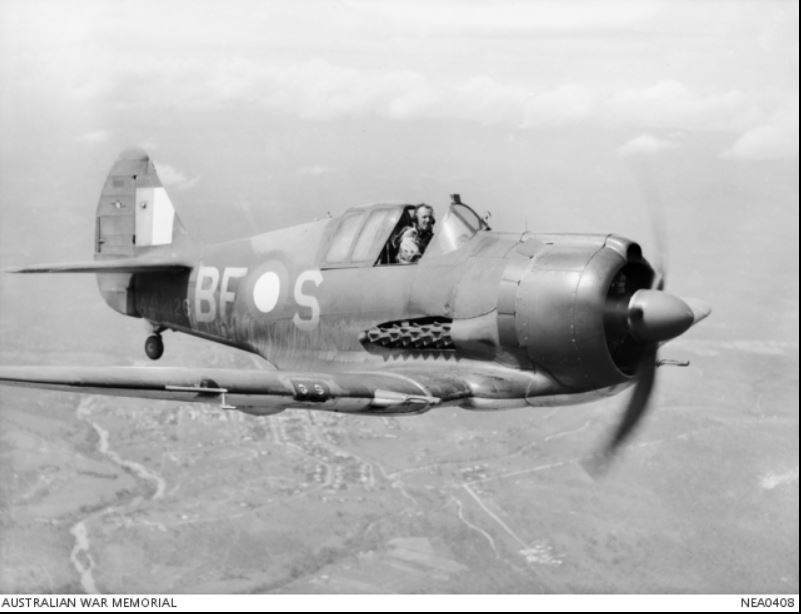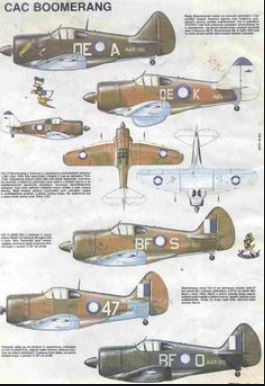CAC Boomerang
From Our Contribution
Contents
[hide]Remarks
Australian designed and built after both Britain and the US were unable to produce additional aircraft for other nations as a result of their need to produce for their own forces. With a decision made to use only those aircraft parts and engines already under manufacture in Australia, the resulting design had a stubby appearance. The first aircraft was provided to a training unit on 19 Oct 1942, and on 10 Apr 1943 the first squadron to be equipped with them (No. 83 Squadron) took delivery.
While there is no evidence of a Boomerang ever fulfilling its role of shooting down a Japanese aircraft, it proved to be a very effective light ground attack aircraft, working closely with troops fighting in New Guinea and the islands.
General characteristics
- Crew: One
- Length: 7.77 m
- Wingspan: 10.97 m
- Height: 2.92 m
- Empty weight: 2,437 kg
- Max takeoff weight: 3,492 kg
- Powerplant: 1 x Pratt & Whitney R-1830 Twin Wasp, 890 kw
- Maximum speed: 491 km/h at 4,724 m
- Range: 1,500 km
- Service ceiling: 8,800 m
- Armament
- Guns: 2× 20 mm Hispano or CAC cannons; 4× 0.303 in (7.7 mm) Browning machine guns
- Bombs: provision for a bomb, when the large ventral drop tank was not carried
Groundcrew
No. 4 Aircraft Depot RAAF
- Robert Alexander MacLean 23 Jan 1943 - 4 Jun 1944
- Alfred Ensor Hand 30 Oct 1944 - 3 Jan 1946
- Edward Trayton Elvish
- Dulcie May Faulkner ??
- Beryl Marion Francis ??
- Maxwell Kenneth Ottaway

